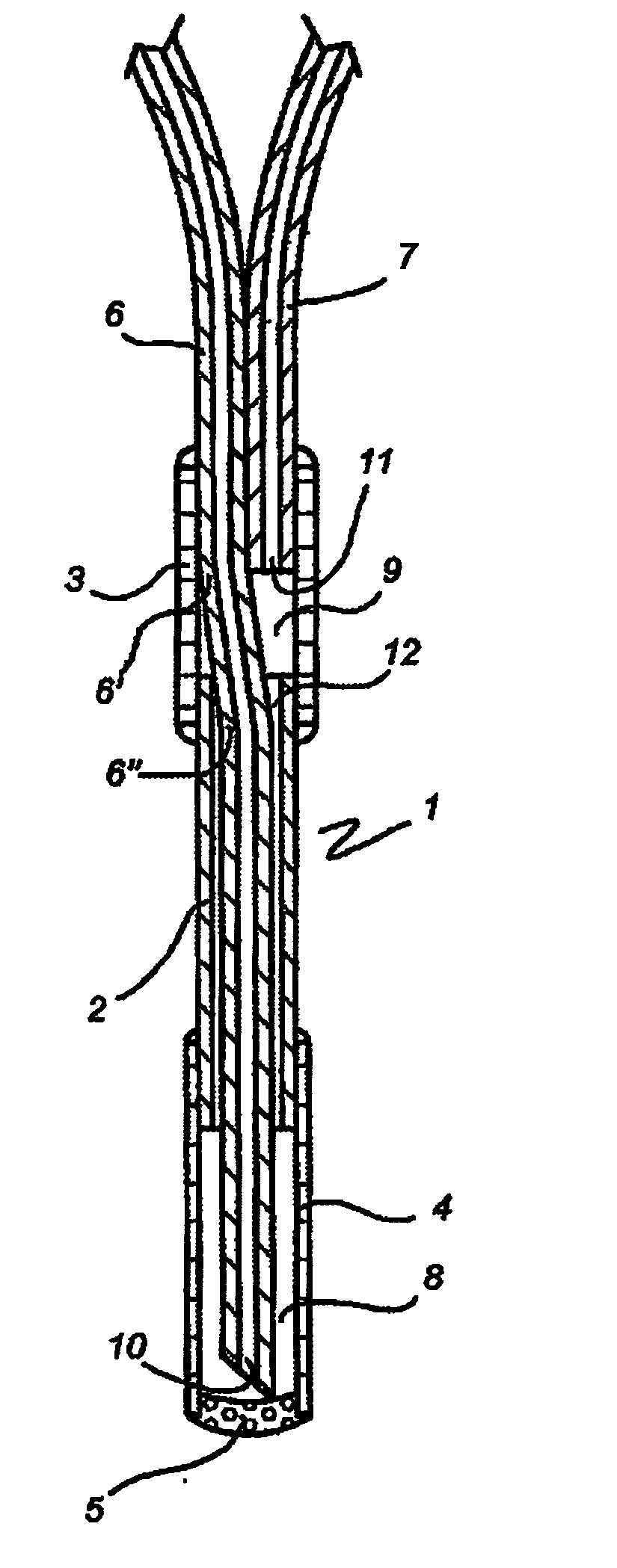Microdialysis probe with inserting means and assembly
a microdialysis probe and inserting means technology, applied in the field of microdialysis probes and assemblies, can solve the problems of large proximal (rear) end portion of state-of-the-art cannulae, design restrictions in regard to microdialysis probes,
- Summary
- Abstract
- Description
- Claims
- Application Information
AI Technical Summary
Benefits of technology
Problems solved by technology
Method used
Image
Examples
Embodiment Construction
[0023] The microdialysis probe 1 of the invention shown in the Figures comprises a substantially rigid cylindrical probe body 2 to which a proximal sleeve 3 is attached by gluing 17 at the sealed rear opening of the proximal sleeve 3 protrude first and second flexible tubes 6, 7, the proximal ends of which are not shown. The distal end portion of the probe body 2 is covered by a dialysis membrane 4. The sealing gluing 17 at the rear opening of the proximal sleeve 3 is shown in FIG. 4. It may be provided, for instance, by a two-component polyurethane glue. Similarly, the membrane 4 is sealed at its front end by a polyurethane plug 5. The probe body 2 can be made of any suitable stiff but resilient plastic material, such as polyamide, but also of metal such as, for instance, stainless steel. The probe body of plastic material can be made opaque to radiation, such as X-rays, by incorporation of finely dispersed barium sulphate. The proximal sleeve 3 is made of polyimide. The flexible t...
PUM
 Login to View More
Login to View More Abstract
Description
Claims
Application Information
 Login to View More
Login to View More - R&D
- Intellectual Property
- Life Sciences
- Materials
- Tech Scout
- Unparalleled Data Quality
- Higher Quality Content
- 60% Fewer Hallucinations
Browse by: Latest US Patents, China's latest patents, Technical Efficacy Thesaurus, Application Domain, Technology Topic, Popular Technical Reports.
© 2025 PatSnap. All rights reserved.Legal|Privacy policy|Modern Slavery Act Transparency Statement|Sitemap|About US| Contact US: help@patsnap.com


